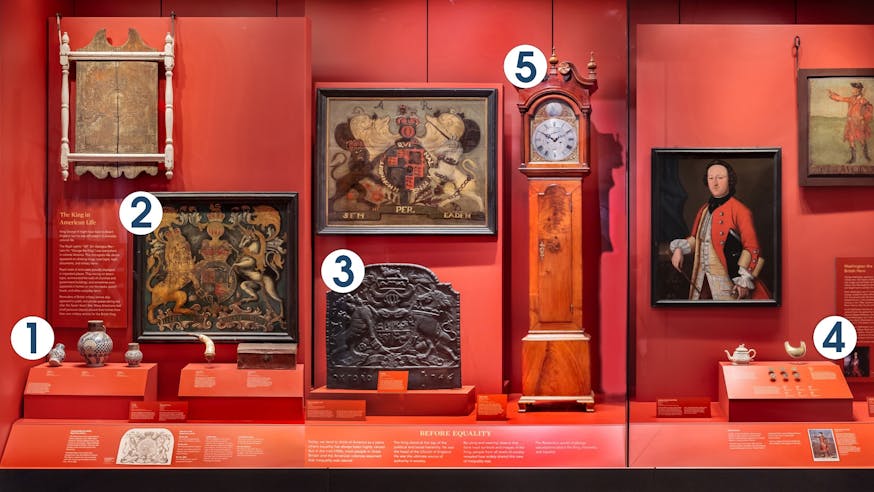General George Washington's 'Military Family'
May 15, 2020Valley Forge tested George Washington. After a string of losing battles, he had lost Philadelphia, which was captured by the British. His army marched into winter camp at Valley Forge in deplorable condition. During the hard winters of the war, Washington relied heavily on his “military family” – his staff officers – as well as his actual family.
The objects in this case from the Museum's "Winter Patriots, 1777-1778" gallery relate to numerous aspects of what “family life” amongst the headquarters staff would have entailed, from a book that was owned by Martha Washington to silver camp cups used during dinners and small camp gatherings and the leather bag that Washington’s enslaved valet would have used to carry his tent during the campaign.

Martha Washington
Martha Washington spent every winter of the war with her husband. At Valley Forge, she helped sustain morale by hosting dinners and dances for officers, members of Congress, and diplomats. Martha also heard petitions that local civilians made to Washington. In a letter from Valley Forge, Lafayette wrote that Martha Washington was “a modest and respectable person who loves her husband madly.”
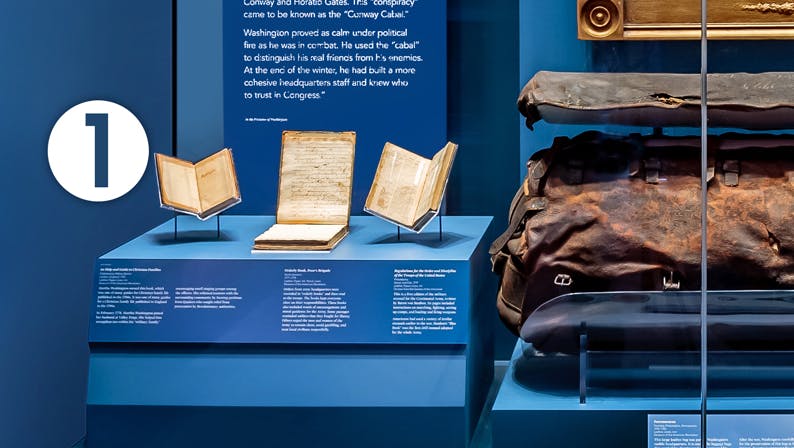
1. An Help and Guide to Christian Families
The book pictured here, An Help and Guide to Christian Families, was owned by Martha Washington and was one of many guides for Christian family life published in England in the 1700s. In February 1778, Martha Washington joined her husband at Valley Forge. She helped him strengthen ties within his “military family,” encouraging small singing groups among the officers. She softened tensions with the surrounding community by hearing petitions from Quakers who sought relief from persecution by Revolutionary authorities.
William “Billy” Lee
Washington’s enslaved valet, William Lee, shared the sufferings of every campaign alongside the general. During the war, Lee married a free black woman in Philadelphia named Margaret Thomas. Later in life, he suffered physical breakdown from the hardships of the war. When Washington died in 1799, he freed Lee in his will, citing “his faithful services during the Revolutionary War.”

2. Portmanteau
This large leather bag was part of Washington’s mobile headquarters. It is one of the luggage bags that carried his sleeping and office tent and his bedding. Lee, along with Washington’s other servants, slaves, and guards, packed these bags every time the army moved to a new camp. After the war, Washington carefully provided for the preservation of this bag at Mount Vernon. It came to represent his status as the “American Cincinnatus,” the general who saved the republic by returning to civilian life at the end of the war.
The Marquis de Lafayette
The Marquis de Lafayette had only been in America for a few months by the time the Army marched into Valley Forge. Washington already viewed him as a son. The 21-year-old French aristocrat had proven his loyalty to Washington during the Conway Cabal, a movement to remove Washington from command, and his valor in combat at the Battle of Brandywine. In January 1778, Lafayette proudly wrote that Washington “finds in me a trustworthy friend to whom he can open his heart.”

3. Camp Cups
In August 1777, silversmith Edmund Milne supplied Washington with 12 silver camp cups, pictured here, made from “16 Silvr Dollrs.” These examples are part of that set. They descended in the Washington family. At some point, they were each engraved to preserve their identity. Each one features a “W” and the inscription: “Camp Cp owned and used by General Washington during War of the Revolution.” Washington used these cups at dinners and small camp gatherings for officers, visiting members of Congress, and foreign dignitaries.
Alexander Hamilton
At only 20 years old in 1777, Alexander Hamilton was already a lieutenant colonel and trusted member of George Washington’s staff. At Valley Forge, Washington encouraged Hamilton to use his keen political sense to recommend solutions to the Army’s continual supply shortfalls. Hamilton’s report submitted to Congress on January 29, 1778 helped defeat the Conway Cabal.
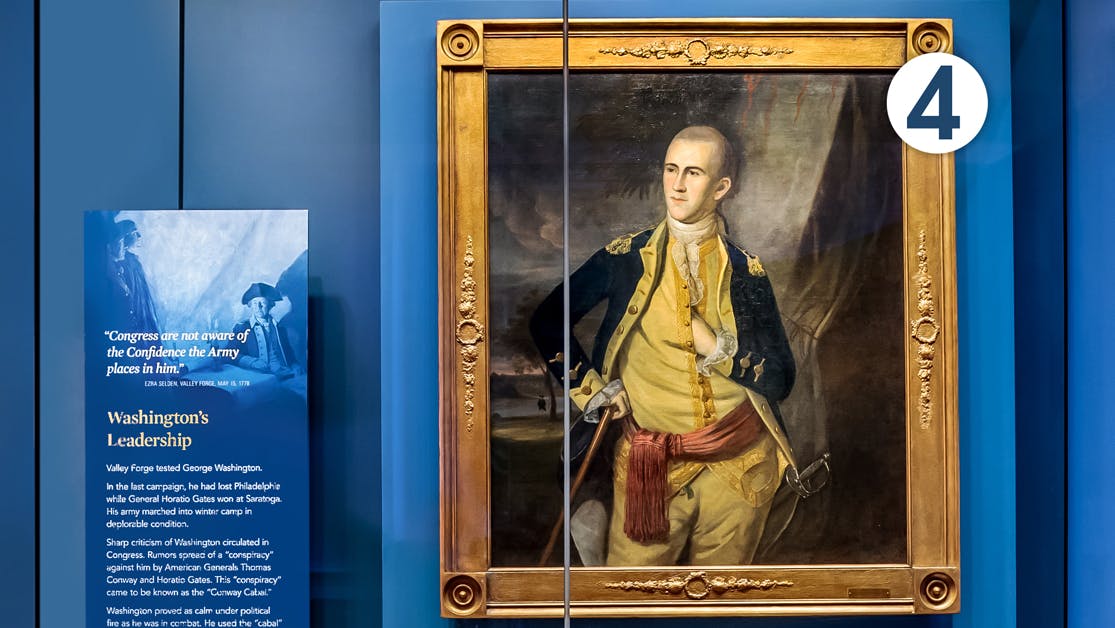
4. Unknown Officer
While the officer in this portrait by Charles Willson Peale, on loan from The Virginia Historical Society, is unknown, most members of Washington’s “military family” at Valley Forge dressed similarly to this officer. He wears the uniform of a Continental Army field grade officer – the ranks just below general. Talented young aides like Alexander Hamilton, David Humphreys, and John Laurens all probably looked something like this when they served as part of Washington’s staff.
Take a closer look at the objects, symbols, and stories in the Museum's "Winter Patriots, 1777-1778" gallery, and dive deeper into the Museum's galleries from home any time with our newly enhanced Virtual Museum Tour.
Editor's Note: The case images reflect a snapshot in time in the Museum's galleries and may not fully reflect the objects currently on display at the Museum or in the Virtual Museum Tour.
Learn More
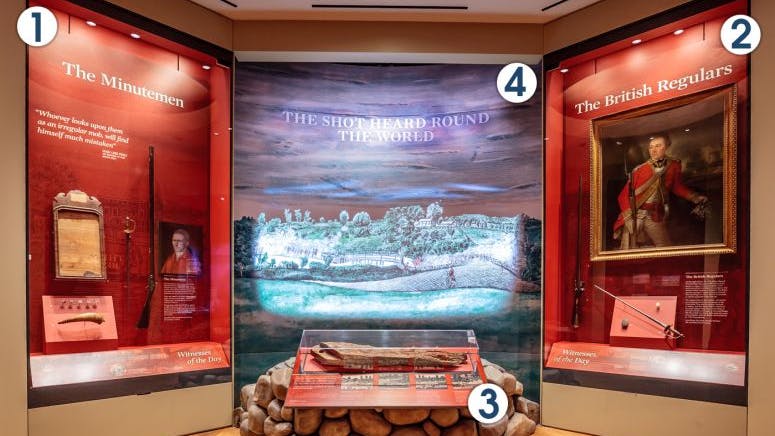
Witnesses of the “Shot Heard 'Round the World"
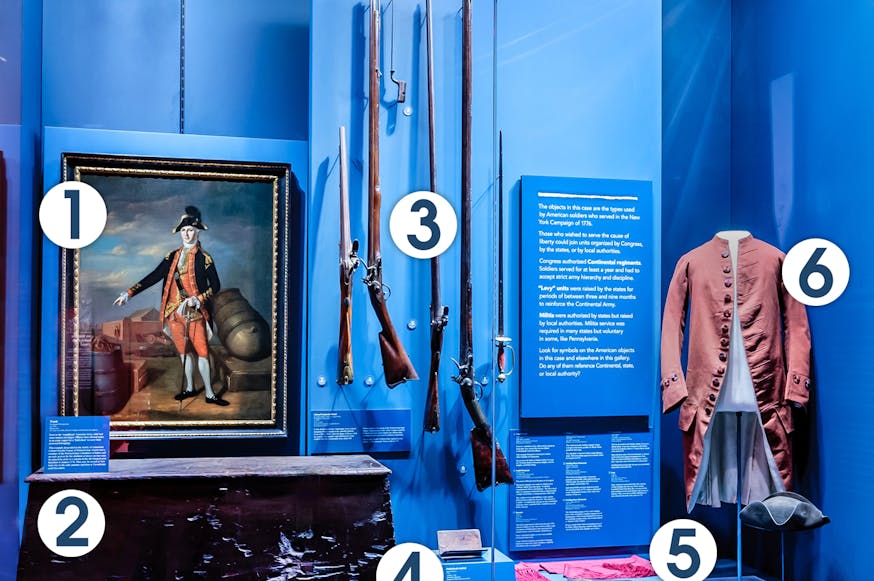
Symbols of a Developing American Republic
